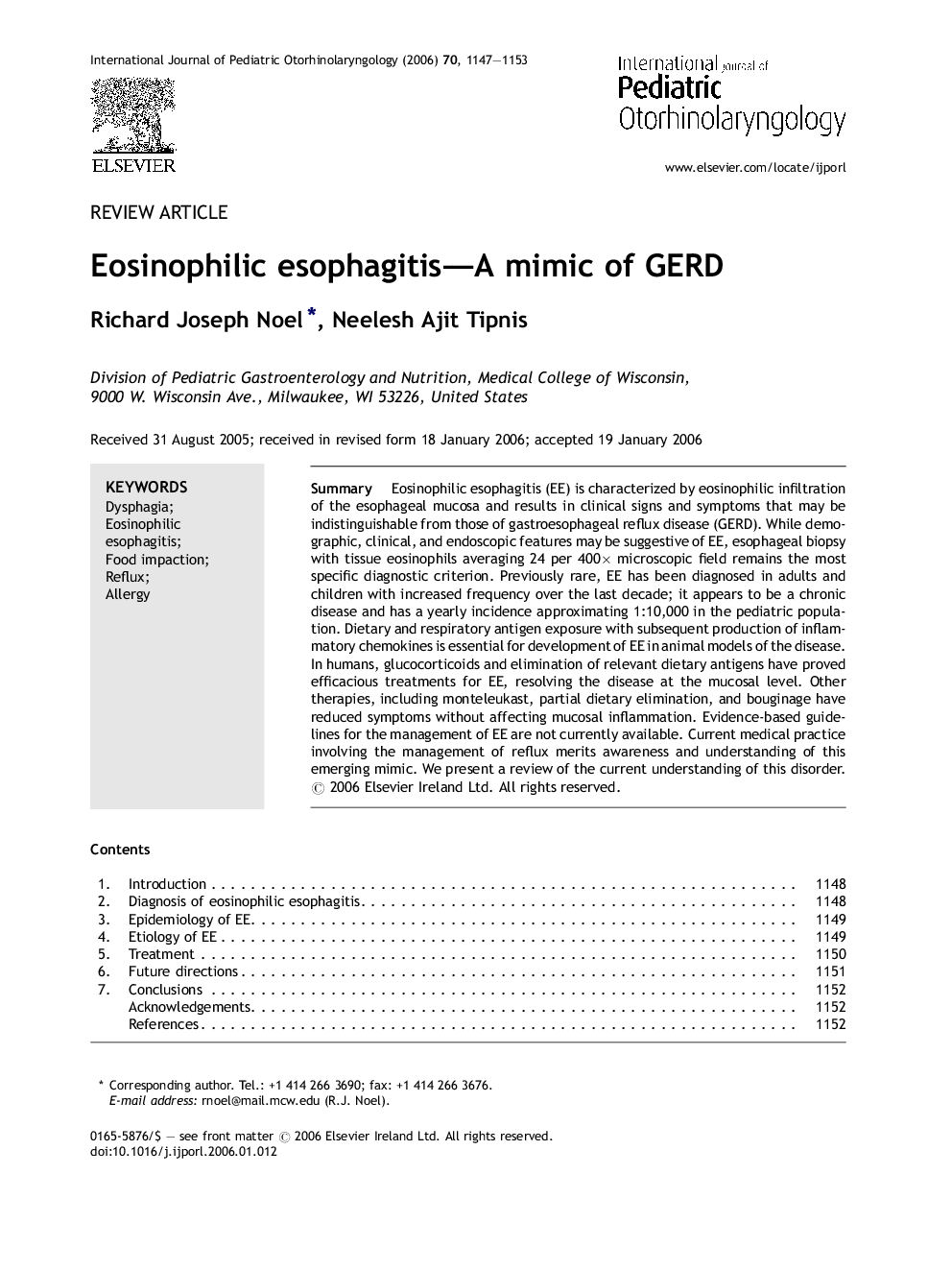| Article ID | Journal | Published Year | Pages | File Type |
|---|---|---|---|---|
| 4115093 | International Journal of Pediatric Otorhinolaryngology | 2006 | 7 Pages |
SummaryEosinophilic esophagitis (EE) is characterized by eosinophilic infiltration of the esophageal mucosa and results in clinical signs and symptoms that may be indistinguishable from those of gastroesophageal reflux disease (GERD). While demographic, clinical, and endoscopic features may be suggestive of EE, esophageal biopsy with tissue eosinophils averaging 24 per 400× microscopic field remains the most specific diagnostic criterion. Previously rare, EE has been diagnosed in adults and children with increased frequency over the last decade; it appears to be a chronic disease and has a yearly incidence approximating 1:10,000 in the pediatric population. Dietary and respiratory antigen exposure with subsequent production of inflammatory chemokines is essential for development of EE in animal models of the disease. In humans, glucocorticoids and elimination of relevant dietary antigens have proved efficacious treatments for EE, resolving the disease at the mucosal level. Other therapies, including monteleukast, partial dietary elimination, and bouginage have reduced symptoms without affecting mucosal inflammation. Evidence-based guidelines for the management of EE are not currently available. Current medical practice involving the management of reflux merits awareness and understanding of this emerging mimic. We present a review of the current understanding of this disorder.
